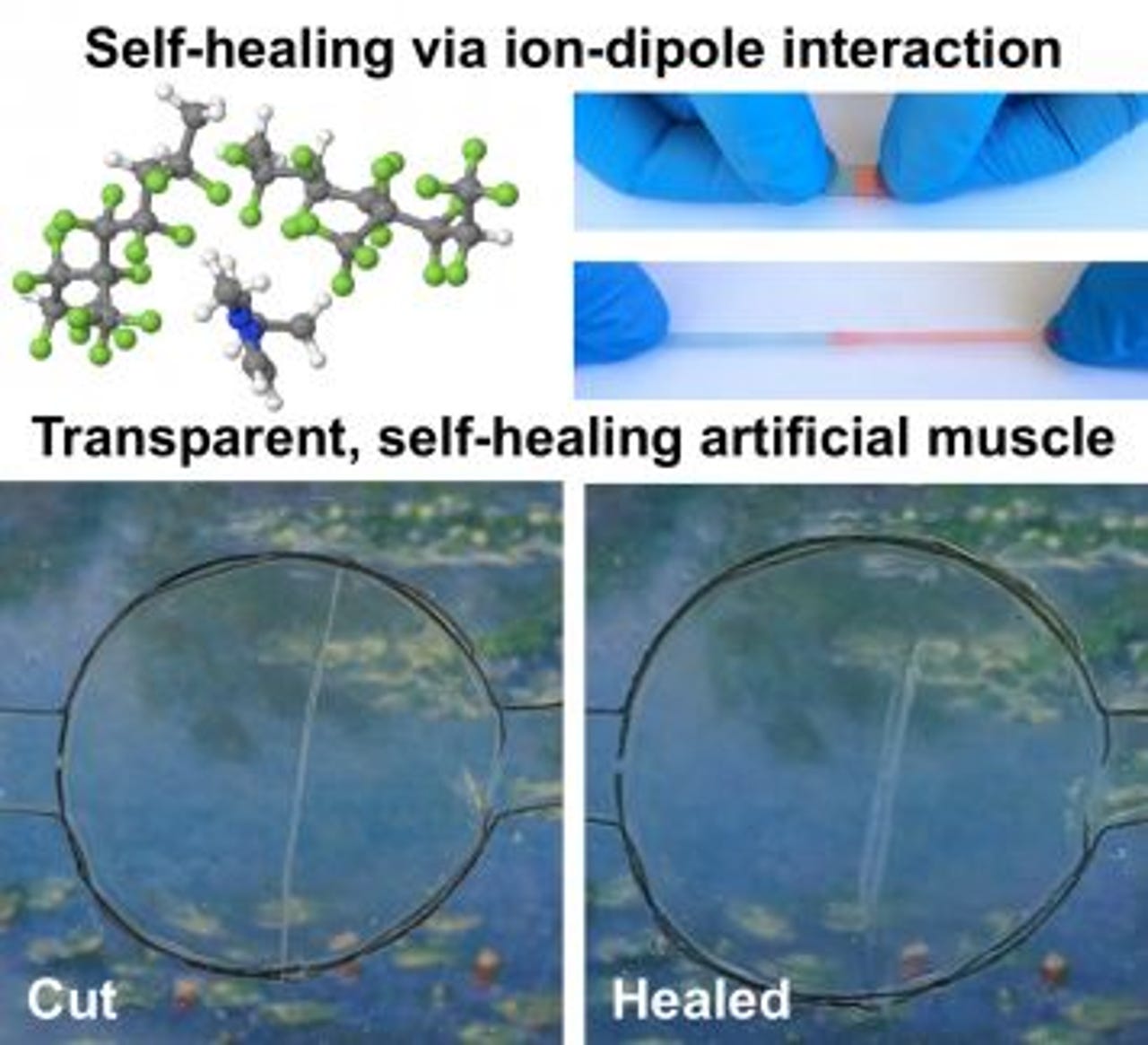No more scratched-up smartphones? Scientists eye 2020 for self-healing screens


The new self-healing polymer before and after being cut.
Soon smartphones may no longer need protective covers thanks to a new super-stretchy and conductive plastic that can recover from cuts and scratches.
Perhaps the only thing less desirable on smartphones than covers are the scratches they prevent. But the new transparent polymer created by researchers from the University of California, Riverside, could lead to phone screens that heal themselves from scratches.
The polymer, which can stretch to 50 times its original size, is able to regain its original form within 24 hours after being sliced in two, according to Chao Wang, a chemist leading the research into the material.
Wang reckons the material could be ready for use in phone screens and batteries by 2020, according to Business Insider.
The self-healing properties have been achieved by combining polymer and high ionic-strength salt to create an ion-dipole interaction, or a force between charged ions and polar molecules.
Wang and fellow researchers have previously touted the material for use in artificial muscles that can expand or contract once stimulated with an electric current.
According to UC Riverside, conventional self-healing polymers used non-covalent bonds that aren't stable under electrochemical conditions, whereas the ion-dipole mechanism uniquely allows it to remain stable in these conditions and offer its self-healing property.
The researchers have demonstrated that an artificial muscle can be cut into separate pieces and will repair without an external stimulus and returned to the same level of performance as before being cut. After five minutes it can be stretched to twice its original length.
Wang admits that his team will need to answer a few questions before it's known whether this material truly is suitable for smartphones and electronics.
At an American Chemical Society conference on Tuesday, Wang acknowledged that some LG smartphones already had self-healing properties. The LG Flex 2 was the first to feature such capabilities, allowing it to recover from scratches within two days.
However, as Wang noted, this feature only applied to the back cover and did not have electronic properties.
Wang said the material will still need to demonstrate greater reliability and show it can perform at a range of temperatures and under high humidity before it is ready for smartphones.
VIDEO: New self-healing material could fix scratches on the phone's screen